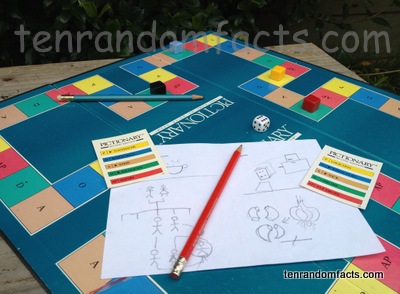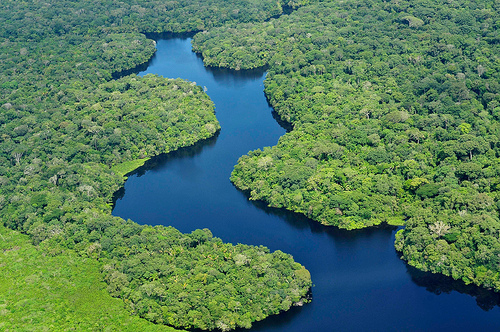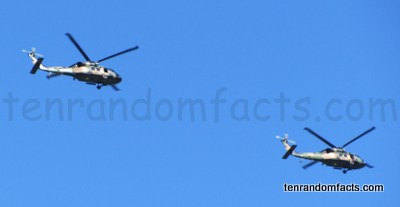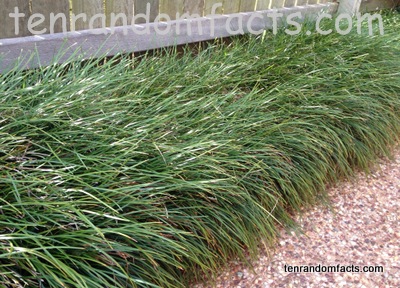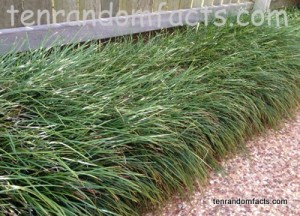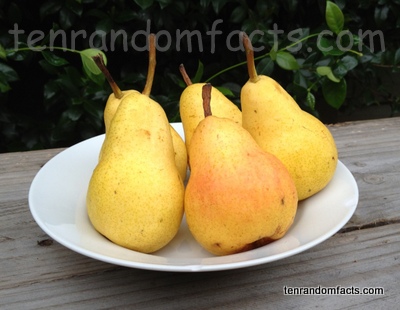
Pears in a pear tree. Sweet n juicy.
- There are approximately 3000 varieties of pears grown around the world, and they are from the species of Pyrus and the family of roses, Rosaceae.
- In Ancient Greece, pears were used in medicine as a treatment for nausea.
- Pears are native to the coastal and mild temperature areas in Europe, Africa and Asia.
- Pears grow on pear trees that reach 10-17 metres (31.8 – 55.8 feet) tall and are normally harvested when they are green, before they ripen.
- China is by far the greatest producer of pears in the world, producing nearly 16 million tonnes in 2011, followed by Italy and the United States of America with less than 1 million tonnes each.
- Pears are eaten fresh, canned or dried and the pear juice can be made into jelly, jam and cider.
- Pears ripen faster when placed in a bowl with bananas.
- Before the introduction of tobacco in Europe, pear leaves were originally smoked.
- Pears are good sources of vitamin C and dietary fibre, most of which can be found in the skin.
- Pear tree wood is a valued timber for carving and the construction of instruments, as it is very stable and does not warp.






